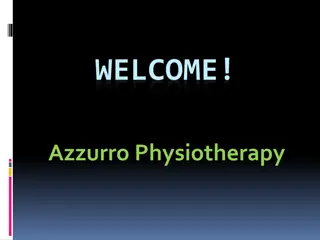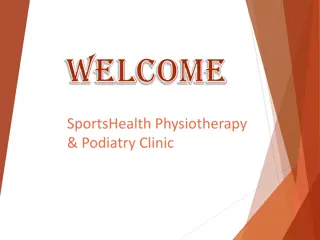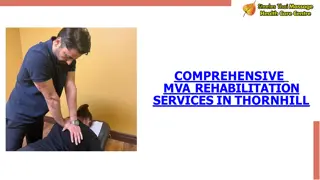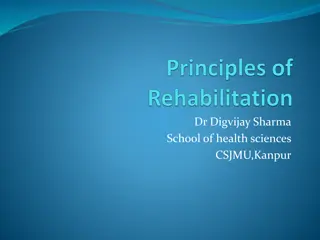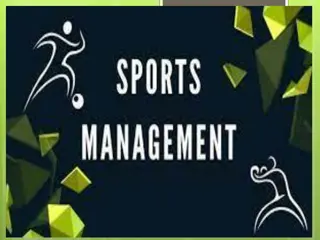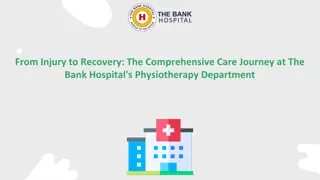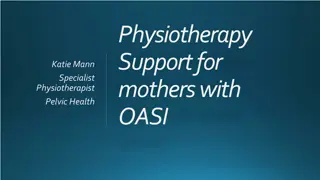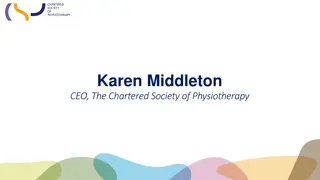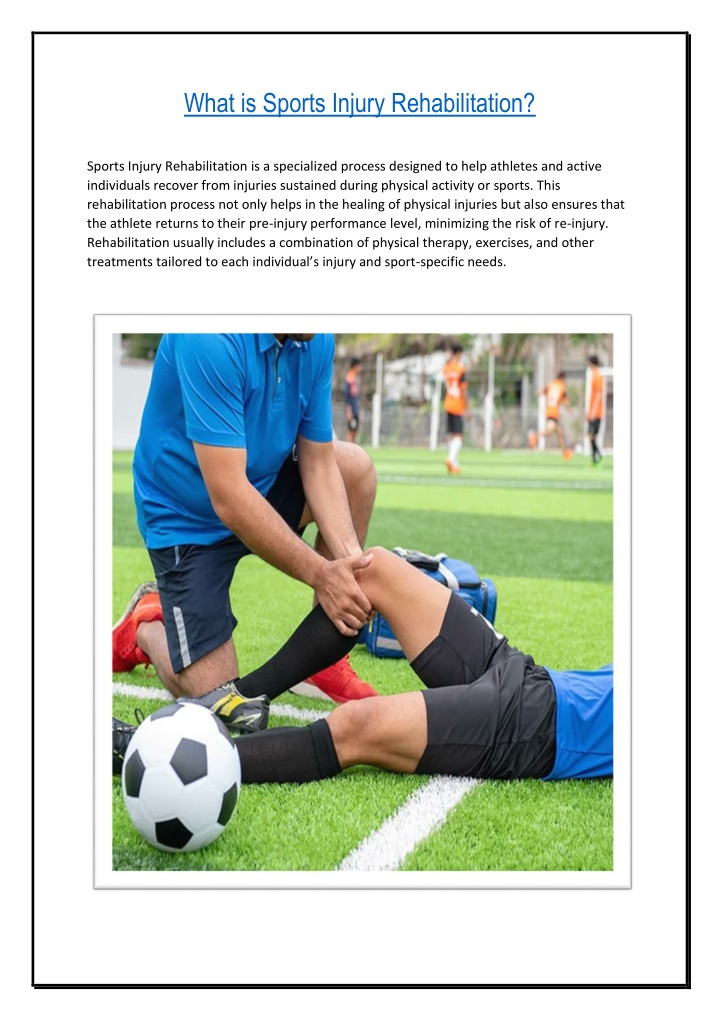
Sports Injury Rehabilitation: Physiotherapy Doctor in Borivali
Sports Injury Rehabilitation is a specialized process designed to help athletes and active nindividuals recover from injuries sustained during physical activity or sports. This nrehabilitation process not only helps in the healing of physical injur
Download Presentation

Please find below an Image/Link to download the presentation.
The content on the website is provided AS IS for your information and personal use only. It may not be sold, licensed, or shared on other websites without obtaining consent from the author. If you encounter any issues during the download, it is possible that the publisher has removed the file from their server.
You are allowed to download the files provided on this website for personal or commercial use, subject to the condition that they are used lawfully. All files are the property of their respective owners.
The content on the website is provided AS IS for your information and personal use only. It may not be sold, licensed, or shared on other websites without obtaining consent from the author.
E N D
Presentation Transcript
What is Sports Injury Rehabilitation? Sports Injury Rehabilitation is a specialized process designed to help athletes and active individuals recover from injuries sustained during physical activity or sports. This rehabilitation process not only helps in the healing of physical injuries but also ensures that the athlete returns to their pre-injury performance level, minimizing the risk of re-injury. Rehabilitation usually includes a combination of physical therapy, exercises, and other treatments tailored to each individual s injury and sport-specific needs.
Common Symptoms of Sports Injuries The symptoms of sports injuries vary depending on the type and severity of the injury. Common symptoms include: 1. Pain - Persistent or sharp pain during or after activity, often indicating muscle or joint damage. 2. Swelling - Swelling around the injured area is a sign of inflammation, often accompanied by warmth and redness. 3. Stiffness - Reduced flexibility and mobility around the affected joint or muscle. 4. Weakness - Loss of strength or the inability to bear weight on the injured limb. 5. Bruising - Discoloration around the injured site due to blood vessel damage. 6. Limited Range of Motion - Difficulty moving the joint or muscle as freely as before the injury. Common Causes of Sports Injuries Sports injuries can occur due to various reasons, including improper technique, overuse, or accidental trauma. Here are some of the primary causes: 1. Overuse and Overtraining - Repeated stress on muscles and joints without proper rest can lead to chronic injuries. 2. Poor Technique - Incorrect movements or postures during activity can put excess stress on certain body parts. 3. Sudden Impact or Trauma - Direct blows or collisions in contact sports often result in fractures, sprains, or contusions. 4. Inadequate Warm-Up - Not warming up properly can make muscles and joints more prone to injury. 5. Improper Equipment - Wearing ill-fitting or worn-out gear, like shoes, can increase injury risks. 6. Environmental Conditions - Unfavorable weather, uneven playing surfaces, or poor lighting can also contribute to injuries.
Rehabilitation: Steps to Recovery The rehabilitation process is comprehensive and typically includes the following steps: 1. Assessment and Diagnosis A sports medicine professional, such as a physical therapist or sports physician, assesses the injury, determining the extent and specific type of damage. Imaging tests like X-rays, MRI, or ultrasound may also be used. 2. Pain and Inflammation Management - In the initial stage, controlling pain and reducing inflammation is critical. This often involves rest, ice, compression, and elevation (RICE), along with anti-inflammatory medications if needed. 3. Restoring Mobility and Flexibility Gentle stretching and range-of-motion exercises are introduced once pain and swelling reduce. These exercises are designed to prevent stiffness and maintain flexibility in the muscles and joints around the injured area. 4. Strength Training - As healing progresses, strength training exercises are gradually introduced. This step focuses on regaining strength in the injured muscle group and balancing muscles to avoid future injuries. 5. Functional Training - This stage involves exercises that mimic the movements of the athlete s sport. Functional training helps the athlete regain confidence in their movements and ensures the injured area can handle the demands of their sport. 6. Balance and Proprioception Training - Many rehabilitation programs include balance training to improve proprioception (the body s awareness of its position). This training helps athletes respond better to quick movements and changes in direction. 7. Gradual Return to Sport - The final step is a gradual return to sport, where athletes start with low-intensity activity and progressively move toward full participation. This stage ensures that the athlete s body is well-prepared to handle the physical demands without risking re-injury.
Contact information Name : PhysioXpert Phone: 8657500666 Location; 2nd Floor, Devkrupa CHS, Shimpoli Signal, Swami Vivekananda Rd, near Pulse Diagnostics, Borivali West, Maharashtra 400092 E-mail: physioxpertsmumbai@gmail.com Conclusion Sports Injury Rehabilitation is essential for any athlete who wants to return to their sport after an injury safely. By following a structured rehabilitation program, athletes can recover effectively, reduce their risk of future injuries, and enhance their overall performance. Always consult with sports rehabilitation professionals for a tailored recovery plan based on individual needs and injury specifics.





